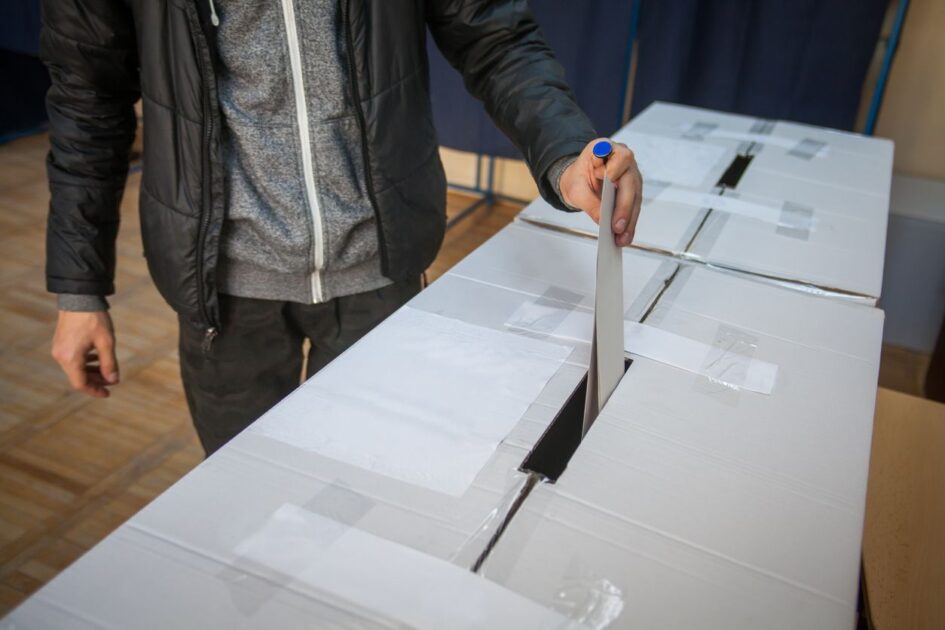Make a plan for voting in the upcoming election
It’s important to plan what time you will vote and how you will get to the polling station

Ireland’s presidential election will be held on Friday, October 24 to decide who will represent the country in this role.
Voters will be able to choose between two candidates, both of whom have a background in politics. In order to participate, make sure that you are registered to vote.
If you want to have your say, then it’s important you make a plan for polling day. Taking some time now to find out where you need to go, what time you will vote and how you will get there could make all the difference on the day.
Here are some things to keep in mind when you plan your vote:
Making a plan for polling day in Ireland
Find out where you vote
The building where you vote is called a polling station. They are often in schools or community centres. The location of your polling station depends on your address. It’s important you know exactly where you are going on polling day. It will tell you on your polling card where your polling station is.
Bring your polling card
A polling card will be delivered to the address you are registered to vote at, before the day of the vote. You do not need a polling card to vote. The purpose of the polling card is simply to give you information on when and where to vote.
The address of your polling station will be printed on the card.
I haven’t received a polling card
If you haven’t received a polling card, but you’re not sure where to go on Friday to vote, you can fill in your details at checktheregister.ie or ring your local authority to find out the address of your polling station. You can find a list of local authorities here.
Decide what time you will vote
Polling stations will be open from 7am – 10pm.
Pick a time to go to the polling station, and make sure you plan it around other commitments like work or college, so that you don’t miss out on voting.
Decide how you will get there
Do you have to travel to another county to vote? Can you walk to your polling station? Will you need to use public transport?
Work out now exactly how you will get to your polling station, and what time you will need to leave to get there at the time you decided. If you can’t get to your polling station, you can’t vote, so figure it out in advance.
Bring photo ID with you to the polling station
You will need some form of ID when you go to vote. This can include:
- Passport
- Driving licence
- Public Services Card
- Employee identity card with a photograph
- Student identity card with a photograph
- A bank, savings or credit union book containing your address
You will need to bring ID even if you received a polling card. If you did not receive a polling card, you can still vote if you bring ID.
How do I fill out my ballot paper?
When you go to vote you’ll be handed a ballot with the names, faces and political parties of all candidates running for election in your area. All you have to do is rank them by putting a 1 next to your favourite, a 2 next to your second favourite, and so on.
You don’t have to rank every single candidate if you don’t want to; in fact, you can just choose one and leave it at that. But by picking second, third and further choices you increase those candidates’ chances of election if your first choice doesn’t get enough support.
Once you’ve ranked as many of the candidates as you like and handed in your ballot, your job as a voter is done.
Remove or cover up any campaign jumpers, t-shirts or badges
No campaign material is allowed within 50 metres of a polling station. This means that you are not allowed to wear any jumpers, badges or other material that show support for any of the candidates.
When you go to the polling station, remove your badges and jumpers, or cover them up so that they can’t be seen. If you are wearing any of these materials, you will be asked to remove them or cover them before you can vote.
You can put them back on when you leave so long as you are 50 metres away from the polling station.
Need more information, advice or guidance?
We offer information, advice and guidance about the issues that matter to you. Our online Youth Information Chat service is for 16 to 25 year olds and is available Monday to Friday, 4pm to 8pm (excluding Bank Holidays).






